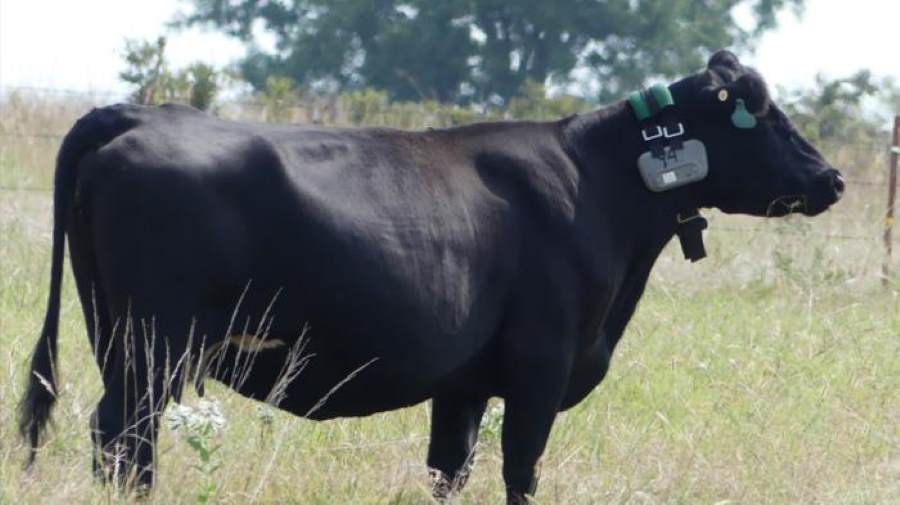Climate change impacting freshwater fish species, study finds
University of Bristol – Freshwater fish populations that dwell nearer the poles are outperforming their equatorial counterparts, researchers have found.
Large-bodied migratory species such as Atlantic salmon are thriving as warming temperatures opens up new habitats at the poleward edge of their ranges.
The study, published in Proceedings of the National Academy of Sciences, was based on a dataset of over 10,000 time series and included over 600 species of fishes.
Climate change has emerged as a key threat to biodiversity, leading to broad-scale shifts in distributions of marine and terrestrial species as they attempt to track thermally suitable habitat. Despite this, the climate responses of freshwater species are comparatively unexplored.
Co-author Professor Martin Genner explained: “A common biological response to climatic warming in marine and terrestrial habitats is that populations are increasing at the poleward side of species ranges, as new environments are generated, and populations are declining at the equatorward side of species ranges, as conditions become too warm.”

The team linked a multicontinental database of riverine fish population abundance time series collected from 1958 to 2019 to temperature data from the same period. Across the sampled localities, waters warmed by 0.21 °C per decade.
They found that observed population trends were consistent with expected patterns from climatic warming, and that the trends were more pronounced in time series covering the longer time periods of over 30 years.
The responses consistent with climate change were most evident in species with larger body sizes, higher trophic levels, river–sea migratory behaviour, and more widespread distributions. Species following this trend include brown trout and coarse fish species familiar to many anglers, such as European perch and northern pike. Moreover, positive abundance responses to warming were more likely at higher altitudes where conditions tend to be cooler.
Professor Genner said: “These findings indicate that projected future warming will likely lead to widespread shifts in riverine community structure, including abundance declines at the trailing edge of species distributions.”
Now the team aims to understand more about the importance of climate change in affecting freshwater fish population sizes relative to other stressors, such as pollution events, habitat modification and fisheries.
He concluded: “Our study has shown how warming waters are impacting freshwater river fishes, that are both rich in biodiversity and are traditionally important to cultures across the world.
“We hope that shining a light on how climate change can affect freshwater fishes will lead to positive actions to enable their conservation and sustainable use.
“We need to learn more about how the impacts of climate change can be lessened through conservation strategies, such as habitat restoration.”
Journal Reference:
T.M. Brown, J. O’Connor, M.J. Genner, ‘Climate warming drives population trajectories of freshwater fish’, Proceedings of the National Academy of Sciences 121 (51) e2410355121 (2024). DOI: 10.1073/pnas.2410355121
Article Source: Press Release/Material by University of Bristol
Reinventing global cooperation through hackathons
Université de Genève – Using collective intelligence to solve a problem: that’s what hackathons are all about. Historically dedicated to developing IT solutions, these events now also focus on global issues, particularly those related to the UN’s Sustainable Development Goals (SDGs).
A team from the University of Geneva (UNIGE), in collaboration with the United Nations Library and Archives in Geneva, analysed 5,456 hackathons. It shows that 30% of them make a significant contribution to the SDGs, particularly climate change. Moreover, they continually attract new participants and generate long-term collective engagement.
These findings, published in the journal Philosophical Transactions of the Royal Society A, argue in favour of hackathons to achieve the SDGs and, more broadly, to adapt multilateralism, which is currently in crisis, to the challenges of the digital age.
A contraction of ‘‘hacking’’ (a rapid solution to technical problems) and ‘‘marathon’’, hackathons have their origins in the hacker movement of the 1950s. Born out of a desire to use technology as a lever for pacifist social change, the movement has had a lasting influence on digital practices.
“Historically, hackathons brought together passionate computer developers who worked together to solve complex software challenges in 24 to 48 hours,” explains Thomas Maillart, a senior researcher at UNIGE’s Geneva School of Economics and Management (GSEM).

Today, these decentralised events bring together people from all backgrounds around projects in a wide range of fields, redefining the way they are approached and carried out.
Recent work carried out by Thomas Maillart with the UN Library & Archives, and teams from the Bern University of Applied Sciences, the MBS School of Business in Montpellier, the Technical University of Eindhoven and Carnegie Mellon University in Pittsburgh, argues in favour of these processes.
First, to align global efforts with the SDGs, in particular through digital development. Secondly, to build the multilateralism of the future. This form of cooperation between more than two states is being undermined by societal changes linked to digital tools, the growing influence of private sector actors and the emergence of global challenges.
Over 5,000 Hackathons Analysed
To support this argument, the researchers analysed data from the Devpost platform, dedicated to hackathons, and GitHub, used for the development of open source computer code. The data included 5,456 separate hackathons, 184,652 projects, 290,795 participants and over 3.3 million software development events.
Of these, 1,320 hackathons were linked to at least one of the 17 SDGs. Around 30% of the hackathons surveyed showed a strong correlation to the SDGs, reflecting their clear focus on global issues. Some goals, such as clean and affordable energy (Goal 7 of the SDGs), attract particularly strong engagement. What’s more, these events attract an average of 72.6% new people, ensuring a constant renewal of communities – and therefore knowledge – while generating concrete, sustainable solutions over time.
Designed to Help International Organisations
From these observations, the research team has developed a theory: ‘‘computational diplomacy’’. According to it, moments of intense innovation strengthen community engagement in the long term, especially on issues related to the SDGs.
“People need to evolve, to become aware of their ecosystems belonging to the planet, in order to reach the necessary level of engagement and thus be able to a ddress the challenges of today’s world, such as climate disruption, without going exclusively through states,” explains Francesco Pisano, Director of the United Nations Library and Archives in Geneva and co-author of the study. “Hackathons, as a participatory tool, are a promising way to strengthen transparency, inclusiveness and collective engagement in global governance in the digital age.” They are also a valuable resource for international organisations that need to reinvent themselves to innovate and engage citizens in the long term.
However, Thomas Maillart stresses the importance of further research to better understand the impact of hackathon solutions and the neurobiological mechanisms that foster the emergence of collective intelligence and intrinsic motivation, i.e. the joy of building a collective vision of the future.
“By exploring the interface between neuroscience, collective intelligence and psychology, we could optimise these participatory processes to meet the complex challenges of the 21st century, while sketching the contours of a citizen-driven multilateralism of the future.”
Journal Reference:
Thomas Maillart, Lucia Gomez, Ewa Lombard, Alexander Nolte and Francesco Pisano, ‘Computational diplomacy: how ‘hackathons for good’ feed a participatory future for multilateralism in the digital age’, Philosophical Transactions of the Royal Society A: Mathematical Physical and Engineering Sciences 382, 2285 (2024). DOI: 10.1098/rsta.2024.0103
Article Source: Press Release/Material by Université de Genève
Virtual fences are a pollinator-friendly option for ranchlands
GPS cattle collars with programmable boundaries can lead to more gradual grazing patterns and vegetation changes in rangeland, creating healthier habitat for birds and pollinators.
Washington, USA | American Geophysical Union – Fences are an effective stationary method of corralling livestock, but their sharp borders can create sudden changes in native grassland vegetation and the pollinators and birds that live there.
Virtual, GPS-based fences may be the nature-friendly future of fencing, creating more natural grassland habitat, finds new research was presented Monday at AGU’s 2024 Annual Meeting.
The Annual Meeting is being held 9-13 December at the Walter E. Washington Convention Center in Washington, D.C., where more than 28,000 scientists will gather to discuss the latest Earth and space science research.
In the new study, researchers at Oklahoma State University investigate how virtual fencing technologies could ease ecological impacts on grassland vegetation. The phrase “virtual fence” might evoke images of those invisible dog fences in backyards, but there are some key differences. There is no buried fence line, and the boundaries can be changed easily with a computer. As cows wander toward the fence, they receive an auditory warning from their collar. If they ignore this and move closer to the fence, they receive an electrical stimulus similar to one from an electric fence.

Previous work on virtual cattle fences focused on their efficacy for containing livestock, such as excluding the animals from sensitive ecosystem areas that are being restored, said Timothy Olsen, a natural resources masters’ student at Oklahoma State University and lead author of the study. Olsen and coauthor Bryan Murray wondered how virtual fences might affect the vegetation structure and heterogeneity of grassland in grazed areas.
Previous studies showed that continuous grassland habitat is more beneficial for supporting bird and pollinator diversity and abundance than fragmented habitat. The researchers hypothesized that the warning from the collar as cattle approached the virtual fence would prompt the animals to graze more randomly, rather than forage right up to a physical fence – making the ecological boundary between grazed plains and natural grassland more gradual.
To test that, the researchers set up six 1,000-square-meter study sites at the Oklahoma State University Bluestem Research Range. Within the grassland pasture, the team created linear boundaries, with three plots with physical fences and three having virtual fence lines. The cattle grazed in the study sites during the spring and summer seasons.
Using drone imagery, the researchers surveyed the six sites and created height models of the vegetation. They then compared the vegetation heights in the traditional fence and virtual fence with ungrazed rangeland. They found the virtual fence created a gradual transition more than 15 meters (50 feet) from the fence, changing from native grassland to fully grazed grass. Additionally, in the virtual fence areas, the researchers found a greater variation of vegetation heights compared to the fenced rangeland. This transitional zone could help increase native habitat for pollinators and birds.
Olsen notes that while virtual fences can help create stronger ecosystems, they can also help ranchers. Fences require time, money and labor to install and maintain, and they are static features ranchers have to work around.
“Virtual fences are an easy way to manage livestock, saving time and labor,” Olsen said. Instead of hiring a team to herd and move cattle from one area to another, the grazing area can be changed remotely on a computer.
Ranchers could also use virtual fences to intentionally create more gradual shifts to grazing areas. “Some studies have looked at virtual fences for rotational grazing where over a period of time, managers can gradually shift the grazing area, nudging cattle to a new field,” Olsen said – no fences or herding required.
More information:
Timothy Olsen, Bryan Murray, ‘Assessing Virtual Fencing Technology for Improving Rangeland Vegetation Structure Heterogeneity‘ (#AGU24)
Article Source: Press Release/Material by American Geophysical Union
New research reveals insights on climate-inspired urban design projects
Annie Reisewitz | University of Miami | Rosenstiel School – A pair of new studies by scientists at the University of Miami Rosenstiel School of Marine, Atmospheric, and Earth Science and the School of Architecture, shed new light on the potential of climate-inspired architectural and urban design proposals, termed “climatopias,” to effectively address climate change challenges.
These studies analyze both specific high-profile projects and a broader range of proposals, providing valuable frameworks for evaluating their effectiveness, feasibility, and social justice implications.

The first paper1 focuses on a detailed analysis of four prominent climatopic design projects. Utilizing a novel evaluation approach, the researchers assessed each project on its effectiveness, justice, and feasibility. Key findings indicate that for climatopias to serve as viable climate solutions, they must prioritize their embodied carbon footprint, feature affordable and participatory designs, and possess the potential for actual implementation or stimulate critical discourse around decarbonization and adaptation strategies, enriching community engagement in climate resilience. This study1 was published in One Earth.
The second paper2 expands the scope of analysis to 66 climatopic proposals from around the globe, aiming to create a typology of these projects based on a range of attributes including climate change response, implementation status, and sociopolitical motivations. The study identifies six primary types of climatopias: Fortify, Forest, Float, Reduce, Re-Use, and Retreat. Among these, the Reduce and Re-Use categories exhibit the most profound engagement with sociopolitical transformation, while the Forest type shows minimal transformation potential. The paper2 was published in Environmental Research: Climate.
“These studies provide a way to quickly and critically assess whether a given climatopia is effective, just, and feasible – which are criteria of a transformational climate solution,” said Alizé Carrère, a doctoral researcher in the Department of Environmental Science and Policy at the Rosenstiel School and the Abess Center for Ecosystem Science and Policy. “The results mark an important step toward better identifying whether the latest utopic design schemes for climate change are truly leading toward transformational outcomes, or whether they are simply distractions.”
Climatopias are proposals in architecture and urban planning aimed at addressing climate mitigation and adaptation goals while fostering sociopolitical transformation for their inhabitants. While some climatopias have been realized, many exist only as theoretical concepts or speculative designs.
The emergence of climatopias highlights the necessity for critical evaluation methods to assess their true potential as transformational climate solutions versus being superficial distractions that hinder long-term progress.
“It’s crucial that societies reimagine how we reduce the intensifying damages and losses of a changing climate,” said Katharine Mach, professor and chair of the Department of Environmental Science and Policy and senior author of the study. “But climatopias, identified and analyzed here in their diversity, are reminders of both the possibilities and the perils of assuming that glossy, seemingly easy solutions to entrenched issues can save the day.”
The authors hope that this research is used not only by academics in the adaptation science community, but also by practitioners and other decision-makers, such as city officials who are presented with these plans and must make informed decisions about their viability as climate solutions.
Journal Reference:
1. Alizé Carrère, Kenneth Broad, Katharine J. Mach, ‘Defining “climatopia”: An evaluation framework to support transformational adaptation in climate-inspired utopic design’, One Earth 7 (10), 1692-1704 (2024). DOI: 10.1016/j.oneear.2024.09.005
2. Alizé Carrère, Kenneth Broad, Joanna Lombard, Denis Hector and Katharine J Mach, ‘A typology of climatopias: visualizations, motivations, and transformations’, Environmental Research: Climate 3, 045024 (2024). DOI: 10.1088/2752-5295/ad8f58
Article Source: Press Release/Material by University of Miami
Featured image credit: Gerd Altmann | Pixabay




